Toni Cade Bambara: The Moment In-Between
By Guest Contributor on November 27, 2014By Dr. Eleanor Traylor
The telephone rang insistently. I had just crossed the threshold of sleep having entered that territory where angels and demons stage a holy or profane war which consciousness will not resist…consciousness desires only escape from care but discovers pandemonium announced by hell’s bells. The telephone was ranging insistently. In stupor, I instinctively clawed for the receiver to make it stop; I hear
Hazel, Miz Hazel.
Consciousness snaps to attention. This is not a demon. I am not in Hell, at least. Miz Hazel is the code name for me and the person on the other end of the line. I had named her that, and she, me. It was Toni Cade Bambara asking me,
“Do you Know Rudolfo Anaya?” I said, “No, Hazel, and I don’t care, I’m sleep.” She said, “You can’t sleep on this, Miss, call me soon’s you finish Bless Me Ultima tomorrow.”
Toni Cade Bambara was an archeologist. She had just discovered the ore from one of her digs. It was two o’clock in the morning EST, and she was telling me of a “culturally out-of-doors community” now entering the domain of “giant talk.” That domain invokes the muse of culture that “powerfully doubles and complicates the discourse of aestheticism, challenges the [imperial] debasements of non-European and African culture, questions the patriarchal paranoia of the master narrative and explores cosmologies that suggest alternative forms of knowledge from which we might salvage possibilities outside the hegemony of [an ontological paradigm for literature]” (Clyde Taylor, The Mask of Art, 275). At two o’clock in the morning, Hazel was telling me that what I needed was not sleep, but the layin’-on-of-hands and the healing potions and council of a Curandera. Despite that stimulus, I was on the nod when I finally hung up from that fore-day in the morning call. But no demons interrupted my brief sleep because whirling in my deep consciousness were the thematics of our usual conversations:
- new possibilities in formation
- new configurations to move with (SE 293)
- the need for legend and fable
- for the extraordinary so big
- the courage to pursue (SE 268)
 This, of course would be the gist of The Salt Eaters to be published in 1980. But these conversations are typical of her archival mind years before she put pen to paper crafting the opening question of that book: “Sweetheart, don’t you want to be well?” In any case, she found in Anaya’s stunning first novel the very stuff of “new formations,” “new configurations to move with,” “new legends and fables,” the extraordinary, and the courage to pursue his large treasure to publication after mainstream publishers had rejected it years before its publication in 1970. Well, we knew that story by rote, we were the children of Sterling Brown and Miss glorious Zora Neale Hurston. What Bambara knew when she woke me to Señor Anaya’s Bless Me Ultima was that she was standing arms outstretched, at the welcome table when Chicano literature came marching in.
This, of course would be the gist of The Salt Eaters to be published in 1980. But these conversations are typical of her archival mind years before she put pen to paper crafting the opening question of that book: “Sweetheart, don’t you want to be well?” In any case, she found in Anaya’s stunning first novel the very stuff of “new formations,” “new configurations to move with,” “new legends and fables,” the extraordinary, and the courage to pursue his large treasure to publication after mainstream publishers had rejected it years before its publication in 1970. Well, we knew that story by rote, we were the children of Sterling Brown and Miss glorious Zora Neale Hurston. What Bambara knew when she woke me to Señor Anaya’s Bless Me Ultima was that she was standing arms outstretched, at the welcome table when Chicano literature came marching in.
I met Toni Cade as she was becoming Bambara alias TCB, alias “the swamphag,” alias the loa of the yellow flowers,” alias Miz Hazel. I met her at one of Dr. Richard A. Long’s conferences on African and African American Studies at Atlanta University. The conference was the veritable academic home for what Bambara called “cultural workers.” I had just completed a Post Doc fellowship at the University of Ibadan and at Legon, Ghana studying African Drama and my paper at the conference was a presentation of the Drama of Ola Rotimi, Wale Ogunyemi and the scene design of Demas Nwoko. The Q and A was rigorous and vigorous. Toni was ebullient, but I had not matched the name with the gorgeous gele on the head that kept bowing. At the party following the day’s session hosted by my former professor Baldwin Burroughs, Chair of the Drama Department at Spelman, Toni walked over to me and said,
I know you have a Gorilla in your house.
I went blank; I just smiled stupidly. Someone called to her:
“Hey, Toni Cade!” Consciousness snapped. I said, “Oh it’s you! It’s Miz Hazel, Gorilla, My Love,” and hugged her. She said, “Slow on the uptake, but right on the money.”
It was a fabulous party.
Since then, we became communicants like those described in “the Johnson Girls” in Gorilla. And our talk, like those girls, was self-fashioning talk. Yes, we were hip as the “fly” hats and dresses that Paula Baldwin Whaley made. Toni introduced me to Paula, James Baldwin’s youngest sister. But it was more than that. More even than “the bath!” she had excavated from the loas and the gins and the Shamen. As she told it, the potions for these baths remain secured in her archives. They are color-coded. I was the human subject for “the green bath.” I can only say that it worked. We were having the conversation about the body. The literature had told the story of a whole body moving in a coherent society, unperplexed; then manacled, then flayed, then uniformed, then adorned, then aware of itself as nation. The moment we were speaking in was the moment of self-fashioning or as she would further fashion it, “consciousness of a certain way of being in the world.”
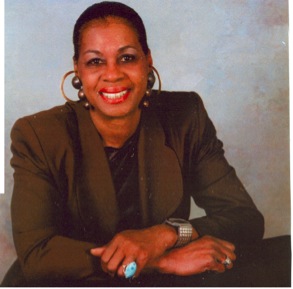 Dr. Eleanor W. Traylor, Professor Emerita in the Department of English at Howard University, is an acclaimed scholar and critic in African-American literature and criticism, Dr. Traylor earned a B.A. from Spelman College; an M.A. from Atlanta University; and a Ph.D. from Catholic University, from which she later received an Alumni Achievement Award in Literary Criticism. Her work has appeared in the form of chapter essays, biographies, articles, and papers on such critically renowned African-American writers as Larry Neal, Henry Dumas, Toni Cade Bambara, Margaret Walker, James Baldwin, Toni Morrison, and Richard Wright. Among the texts that she has produced are Broad Sympathy: The Howard University Oral Traditions Reader (1996), The Humanities and Afro-American Literary Tradition (1988), a multimedia piece entitled The Dream Awake: A Spoken Arts Production (1968), College Reading Skills (1966), and biographical and cultural scripts for the Smithsonian Institution Program in Black American Culture. Her most recent theoretical essays are published in Black Renaissance Noir Volume 9:1 and 2:3 Winter (2009/2010); The Cambridge Companion to African American Women’s Literature edited by Angelyn Mitchell and Danille K. Taylor, 2009; and Contemporary African American Fiction: Critical Essays edited by Dana Williams, 2010. She is currently working on a book to identify and define an ignored or underexplored genre of African American literature.
Dr. Eleanor W. Traylor, Professor Emerita in the Department of English at Howard University, is an acclaimed scholar and critic in African-American literature and criticism, Dr. Traylor earned a B.A. from Spelman College; an M.A. from Atlanta University; and a Ph.D. from Catholic University, from which she later received an Alumni Achievement Award in Literary Criticism. Her work has appeared in the form of chapter essays, biographies, articles, and papers on such critically renowned African-American writers as Larry Neal, Henry Dumas, Toni Cade Bambara, Margaret Walker, James Baldwin, Toni Morrison, and Richard Wright. Among the texts that she has produced are Broad Sympathy: The Howard University Oral Traditions Reader (1996), The Humanities and Afro-American Literary Tradition (1988), a multimedia piece entitled The Dream Awake: A Spoken Arts Production (1968), College Reading Skills (1966), and biographical and cultural scripts for the Smithsonian Institution Program in Black American Culture. Her most recent theoretical essays are published in Black Renaissance Noir Volume 9:1 and 2:3 Winter (2009/2010); The Cambridge Companion to African American Women’s Literature edited by Angelyn Mitchell and Danille K. Taylor, 2009; and Contemporary African American Fiction: Critical Essays edited by Dana Williams, 2010. She is currently working on a book to identify and define an ignored or underexplored genre of African American literature.
You may also like...
1 Comment
All Content ©2016 The Feminist Wire All Rights Reserved


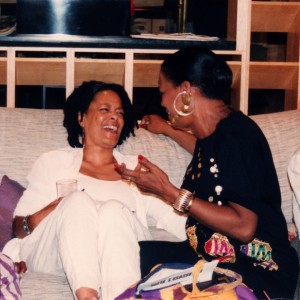
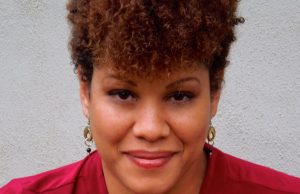
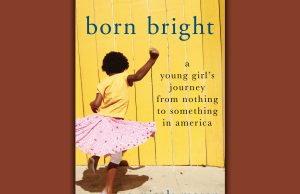
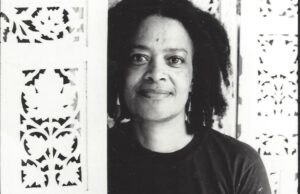
Pingback: Afterword: Toni Cade Bambara's Living Legacy - The Feminist Wire | The Feminist Wire